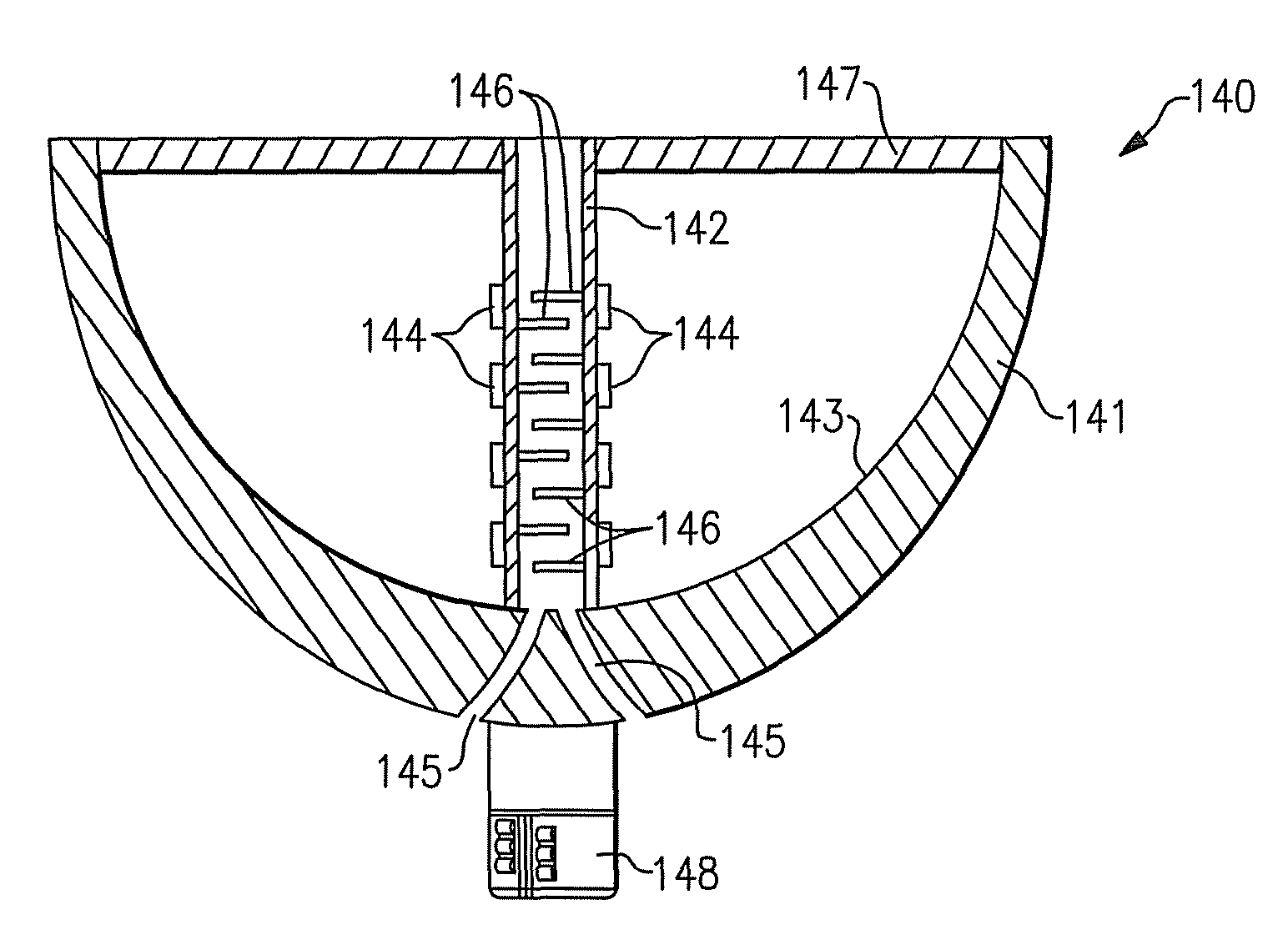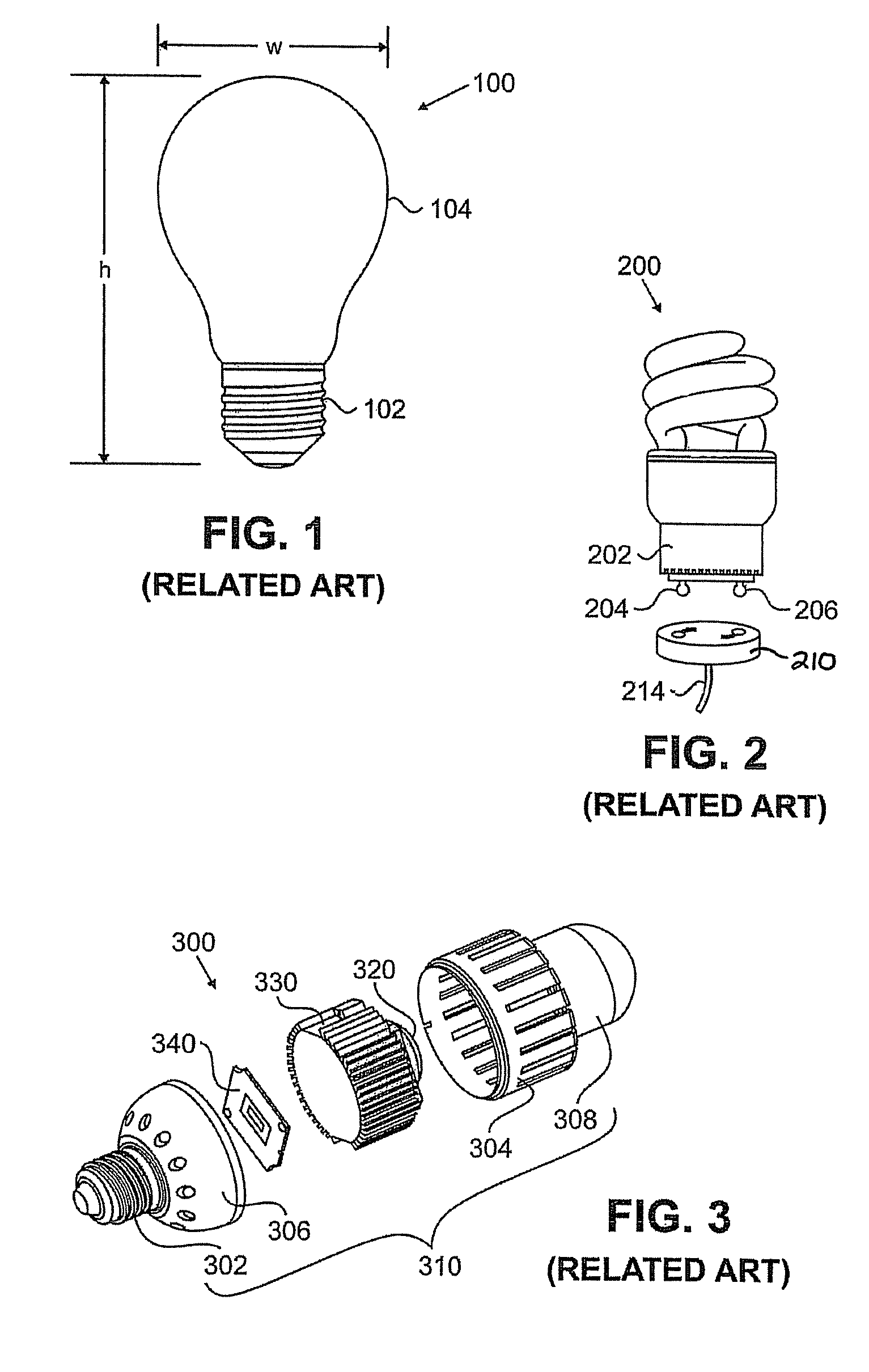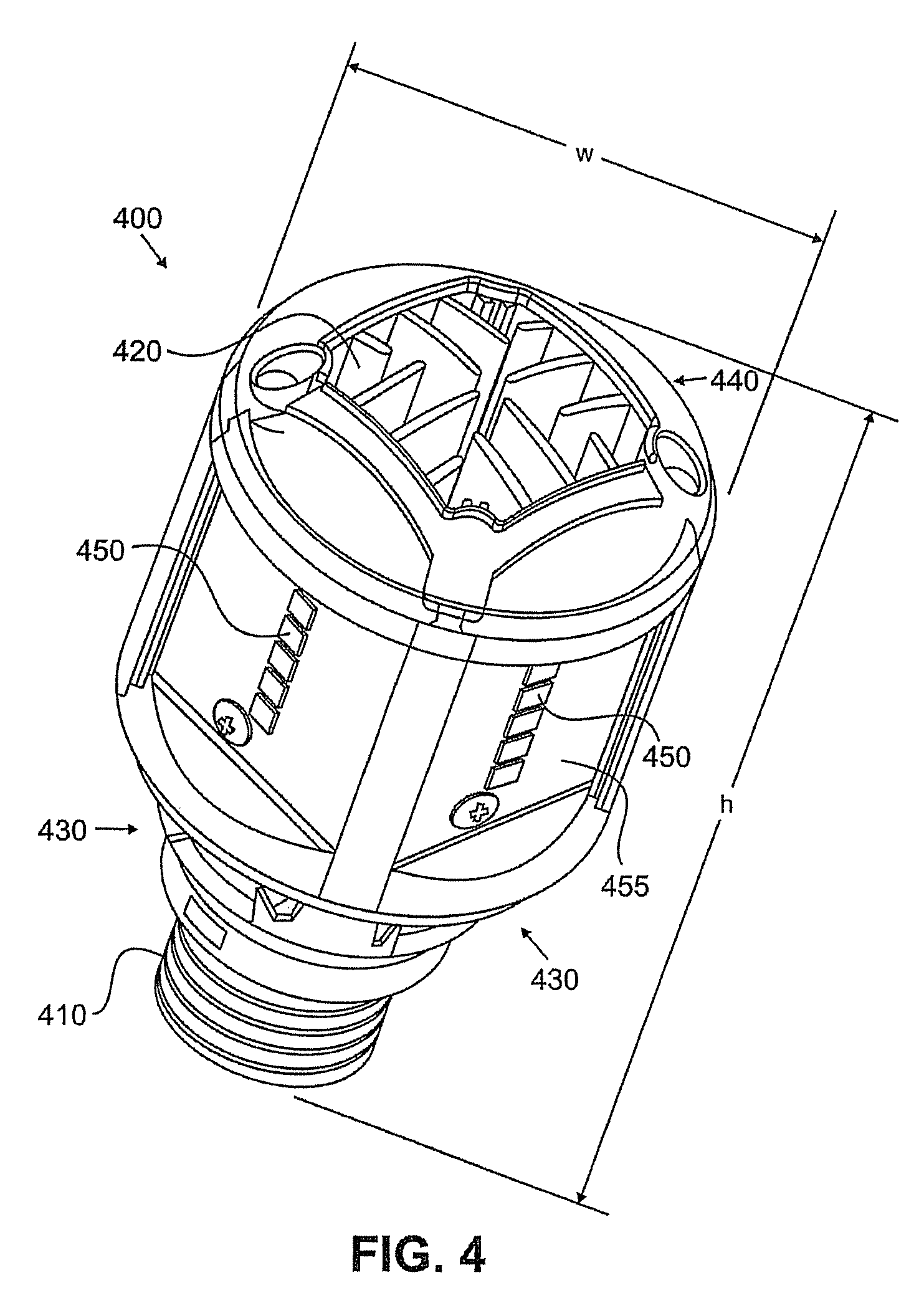Heat sinks and lamp incorporating same
a heat sink and sink technology, applied in the field of general illumination, can solve the problems of many solid-state light emitters not working as well as possible, and achieve the effects of good color rendering index, good contrast, and high efficiency
- Summary
- Abstract
- Description
- Claims
- Application Information
AI Technical Summary
Benefits of technology
Problems solved by technology
Method used
Image
Examples
example 1
[0370]A heat sink arrangement as illustrated in FIGS. 13-15 was produced from aluminum. The dimensions of the heat sink were as described above. Ten Cree XP LEDs (6 BSY and 4 red) from the R2 and M2 brightness bins were mounted on a MCPCB which was then mounted to the heat sink. A thermal grease was placed between the MCPCB and the heat sink to improve the thermal connection between the MCPCB and the heat sink. The lower section without a power supply was also constructed as part of the lenses. The top outlet had a cross-sectional area of 30 mm×30 mm, minus the areas occupied by the fins. The bottom inlet had a cross-sectional area of about 864 square millimeters (four openings, each 24 mm×9 mm).
[0371]The above-described lamp was placed in an upright vertical orientation in a 25° C. ambient and driven with a remote power supply with 375 mA of current at 24.9 V initially and stabilized at 24.03 V after 40 minutes. The light output and electrical characteristics measured are summarize...
example 2
[0374]A heat sink arrangement substantially as illustrated in FIGS. 13-15 was produced from aluminum. The dimensions of the heat sink were substantially as described above, except that the heat sink (and its fins) were instead shaped as shown in FIGS. 21 and 22. In each of the four sides, seventeen Cree XP LEDs from the S2 and P3 brightness bins were mounted on a MCPCB which was then mounted to the heat sink. A thermal grease was placed between the MCPCB and the heat sink to improve the thermal connection between the MCPCB and the heat sink. The layout for the LEDs on the front and back sides is depicted in FIG. 19, and the layout for the LEDs on the right and left sides is depicted in FIG. 20. A somewhat larger MCPCB was used (in comparison to the one depicted in FIG. 6) to accommodate the larger number of LEDs. The lower section without a power supply was also constructed as part of the lenses. The top outlet had a cross-sectional area of 30 mm×30 mm, minus the areas occupied by t...
example 3
[0377]The lamp described above in Example 2 was tested in a CALiPER approved Photometric Test Laboratory. The test was conducted with the lamp in an inverted vertical orientation (base up). The light output and electrical characteristics measured are summarized below:
[0378]
total luminous flux977 lumenswall plug efficiency104.1 lumens per wattCCT2748 KCRI91.2Radiant flux3.09 wattsChroma x / chroma y0.4527 / 0.4039Chroma u / chroma v0.2609 / 0.3491input power9.389 wattsinput voltage (60 Hz)120.0 Vinput current195.3 mApower factor0.400ambient T23.7 degrees C.stabilization time44 minutestotal operating time47 minutes
PUM
 Login to View More
Login to View More Abstract
Description
Claims
Application Information
 Login to View More
Login to View More - R&D
- Intellectual Property
- Life Sciences
- Materials
- Tech Scout
- Unparalleled Data Quality
- Higher Quality Content
- 60% Fewer Hallucinations
Browse by: Latest US Patents, China's latest patents, Technical Efficacy Thesaurus, Application Domain, Technology Topic, Popular Technical Reports.
© 2025 PatSnap. All rights reserved.Legal|Privacy policy|Modern Slavery Act Transparency Statement|Sitemap|About US| Contact US: help@patsnap.com



